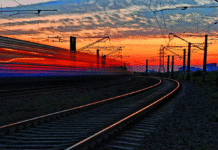Introduction
Established in 1727 by Maharaja Sawai Jai Singh II, Jaipur is recognised as one of India’s earliest planned cities. Jaipur, the capital of Rajasthan, commonly referred to as the Pink City, is distinguished by its vibrant pink-hued architecture, rich historical significance, and notable urban infrastructure. The economy of Jaipur predominantly relies on tourism, handicrafts, and the trading of gemstones. In 1876, the city was painted pink to honour the visit of the Prince of Wales, thereby earning its iconic designation as the Pink City.
Over the period of time, Jaipur has experienced substantial population growth, ranking as the tenth most populous city in the nation. According to the 2011 census, the city had a population of 3.1 million, with projections estimating an increase to 8.1 million by 2031. This rise in residents necessitates an efficient public transportation system to adequately meet the growing commuter demand. Additionally, the expanding population raised the issue of traffic congestion in the city. The city saw an urgent requirement for a more effective transit solution. In response to this, the Jaipur Metro Rail Project was initiated as a sustainable and efficient urban transport alternative.
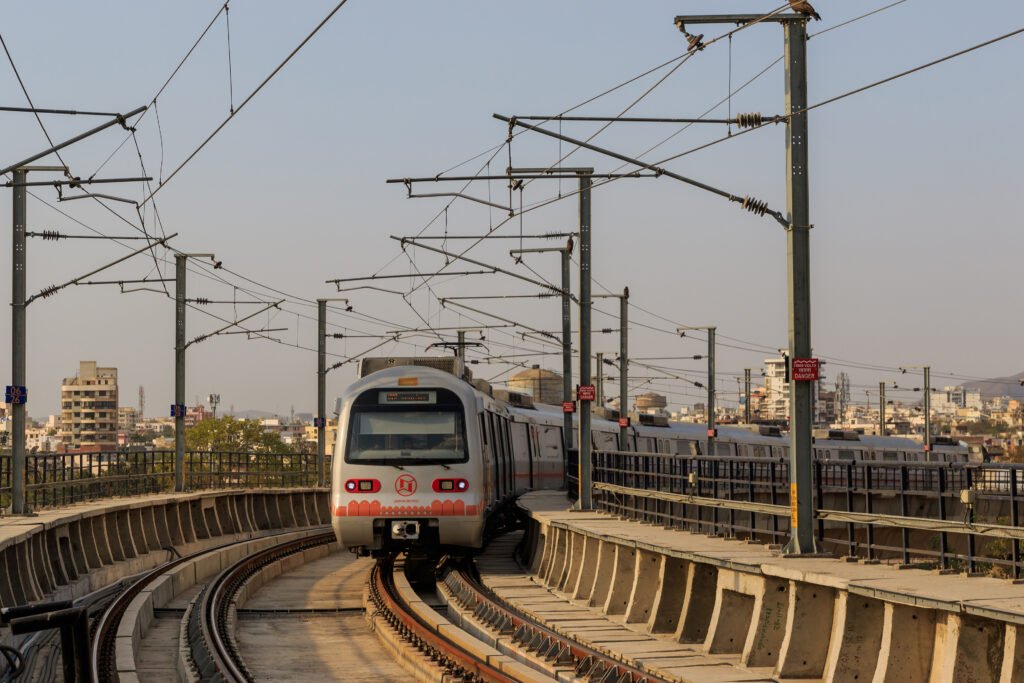
Jaipur Metro: Transforming Urban Mobility
Overview
- The Jaipur Metro Rail Project is an Urban Mass Rapid Transit System (MRTS) planned for the city.
- The Jaipur Metro Project comprises two planned corridors: the East-West Corridor and the North-South Corridor.
- Currently the Phase 1 of the Jaipur Metro, which consists of a single corridor, the Pink Line, spanning 11.98 km, is operational.
- In January 2010, Jaipur Metro Rail Corporation (JMRC), A Special Purpose Vehicle (SPV), was established for the effective implementation of the Jaipur Metro.
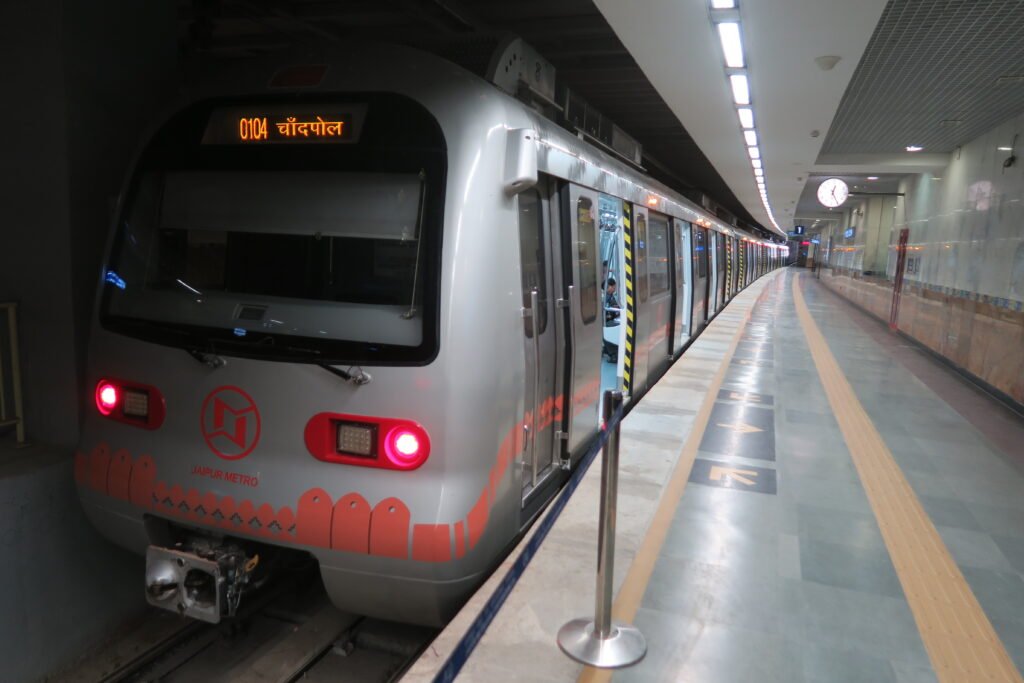
Key Specification
| Speed and Track | Top Speed: 80 kmph |
| Average Speed: 32 kmph | |
| Track Gauge: Standard Gauge – 1435 mm | |
| Electrification | 25 kV, 50 Hz AC OHE |
| Signaling | Cab Signalling/Distance to Go |
| Rolling Stock | 40 coaches (10 train-sets x 4) supplied by BEML |
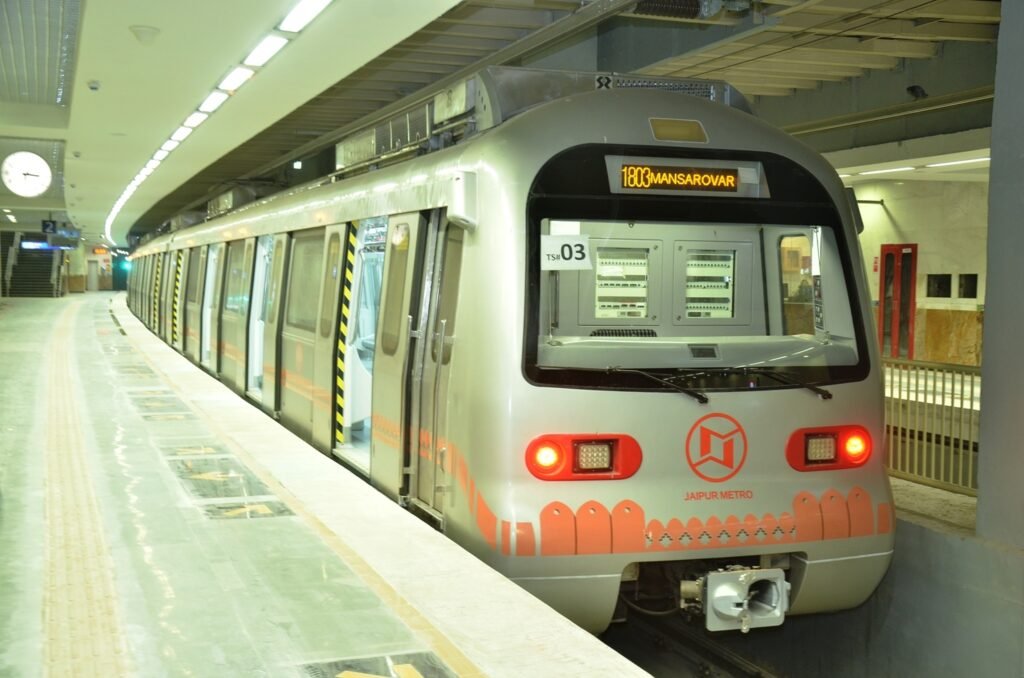
Jaipur Metro Phase 1
Overview
Phase 1 of the Jaipur Metro project consists of a single corridor, the Pink Line, spanning 11.98 km (operational). The operational Route of the Jaipur Metro Phase 1 has been divided into Phase 1A and Phase 1B.
| Description | Phase-1A (Mansarovar to Chandpole) | Phase-1B (Chandpole to Badi Chaupar) | Total Phase-1 (Mansarovar to Badi Chaupar) |
| Elevated Route Length (in km) | 9.13 | 0 | 9.13 |
| Underground Route Length (in km) | 0.5 | 2.35 | 2.85 |
| Total Route Length (in km) | 9.63 | 2.35 | 11.98 |
| Elevated Stations | 8 | 0 | 8 |
| Underground Stations | 1 | 2 | 3 |
| Total Stations | 9 | 2 | 11 |
| Total Project Cost (₹ in Crore) | 2,023 | 1,126 | 3,149 |
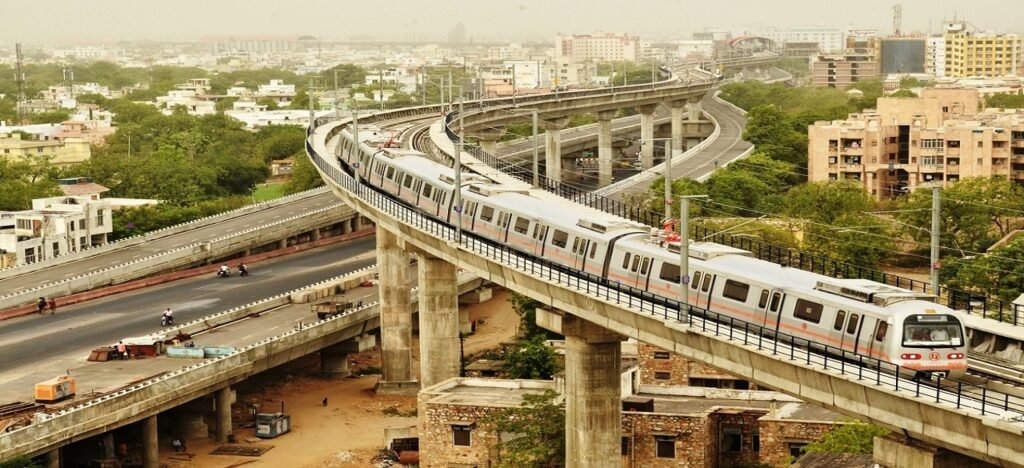
Preparation and Evolution of DPR For Phase 1
March 2010: Initially, the Delhi Metro Rail Corporation (DMRC) submitted the Detailed Project Report (DPR) for the Jaipur Metro Rail Project. The DPR submitted by DMRC consisted of two corridors:
| Corridor-1 | Durgapura to Ambabari |
| Corridor-2 | Mansarovar to Badi Chaupar |
April 2011: The DPR submitted by DMRC was revised. In the revised DPR, Corridor 1 was extended to Sitapura Industrial Area instead of ending at Durgapura.
March 2012: A decision was made to bifurcate the DPR into two phases:
| Phase I | Mansarovar to Badi Chaupar |
| Phase II | Sitapura Industrial Area to Ambabari |
Jaipur Metro Phase 1 has been planned and implemented in four sections:
| Phase | Route | Length | Status | Operational Since |
| Phase 1A | Mansarovar to Chandpole | 9.63 km | Operational | June 3, 2015 |
| Phase 1B | Chandpole to Badi Chaupar | 2.35 km | Operational | September 23, 2020 |
| Phase 1C | Badi Chaupar to Transport Nagar | 3.41 km | Under Implementation | TBD |
| Phase 1D | Mansarovar to Ajmer Road | 1.35 km | Under Implementation | TBD |
| Note: The Rajasthan state government officially announced the Phase-1C and Phase-1D extensions of Jaipur Metro’s corridor 1 in the 2022–2023 budget, outlining these initiatives as part of the broader metro expansion plans. |
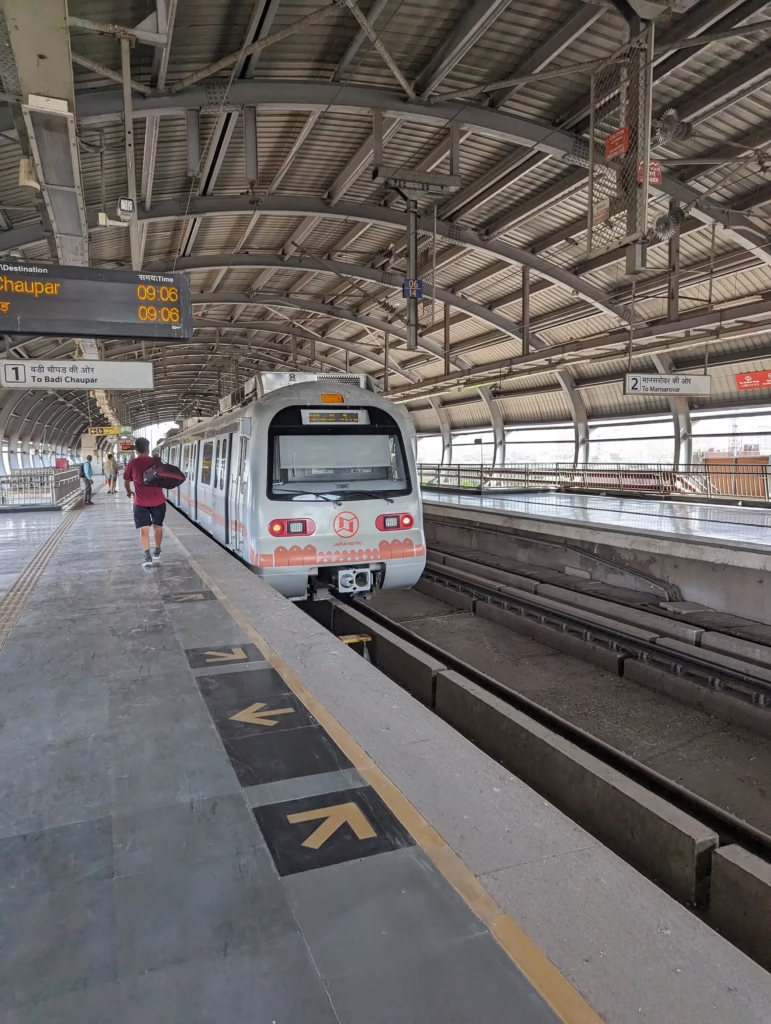
Jaipur Metro Phase 1 Route Details
Jaipur Metro Operational Route
Phase 1A & Phase 1B
Line-1 – Pink Line: Mansarovar – Badi Chaupar
- Length: 9.63 km (Phase 1A) and 2.35 km (Phase 1B)
- Type: Elevated & Underground
- Depot: Mansarovar
- Number of Stations: 11
- Station Names: Mansarovar, New Aatish Market, Vivek Vihar, Shyam Nagar, Ram Nagar, Civil Lines, Railway Station, Sindhi Camp and Chandpole, Chhoti Chaupar, and Badi Chaupar

Jaipur Metro Under Implementation Route
Phase 1C
Line-1 – Pink Line: Badi Chaupar – Transport Nagar (Phase 1C)
- Length: 3.41 km
- Type: Underground (2.65 km) & Elevated (0.76 km)
- Estimated Project Cost: Rs. 980.08 Crores
- Number of Stations: 2
- Station Names: Ramganj Chaupar (underground) & Transport Nagar (elevated)
Phase 1D
Line-1 – Pink Line: Mansarovar to Ajmer Road Chauraha (Phase 1D)
- Length: 1.35 km
- Type: Elevated
- Estimated Project Cost: Rs. 980.08 Crores
- Number of Stations: 1
- Station Names: Ajmer Road Chauraha
| Recent Update on Phase 1C & 1D In May 2025, Sam India Builtwell commenced the casting of the first pier cap for Phases 1C and 1D within package JP/EW/1C&1D(Elevated)/02R. |

Jaipur Metro Phase 2
Overview
The Jaipur Metro Phase-2 was announced in the State Budget 2025-26. The Jaipur Metro Phase 2 will be financed by the Asian Development Bank (ADB) and Asian Infrastructure Investment Bank (AIIB) through loans provide loans which are estimated to cost about Rs 12,260 Crore.

Preparation and Evolution of DPR For Phase 2
The concept of Phase 2 for Jaipur Metro evolved from the bifurcation of the Detailed Project Report (DPR) into Phase 1 & Phase 2.
| 2012 | The DPR was updated and proposed a route of 23.099 km from Sitapura Industrial Area to Ambabari, comprising 5 underground stations and 15 elevated stations. |
| 2014 | The DPR was modified to realign the metro system in consideration of the Air Funnel at Jaipur Airport and to ensure connectivity with the Collectorate. |
| 2017: | The introduction of the Metro Rail Policy necessitated the incorporation of new guidelines and elements, As a result, the 2011 DPR was rendered and not implemented. |
| 2020 | The DMRC revised the DPR and proposed a fully elevated route (Orange Line) spanning 23.51 km, comprising 21 elevated stations. |
| 2024 | The Government of Rajasthan announced a 7 km extension of the metro line northwards between Ambabari and Vidhyadhar Nagar. This extension necessitated a comprehensive reconsideration of Phase 2, prompting the JMRC to restructure the project into two segments: Phase 2A: Ambabari – SitapuraPhase 2B: Ambabari – Vidhyadhar Nagar |
| Nov 2024 | JMRC appointed the Rail India Technical and Economic Service (RITES) to review the DPR for the Jaipur Metro Phase 2 project, taking into account the latest modifications and feasibility considerations |
| April 2025 | RITES submitted a draft of the DPR; however, the Chief Minister of Rajasthan proposed amendments to the DPR of the Jaipur Metro Phase 2. |
May 2025 | Chief Minister of Rajasthan, Bhajan Lal Sharma, approved the Detailed Project Report (DPR) of Jaipur Metro Phase 2 submitted by RITES. |
Route Approved by the Rajasthan Government
The Detailed Project Report (DPR) approved by the Rajasthan Government proposed the north-south main transit corridor of Jaipur city, between Todi Mod and Prahladpura, spanning 42.80 km. A total of 36 stations have been proposed in the DPR, comprising 34 elevated stations and two underground stations.
Impact of Jaipur Metro
1. Enhanced Connectivity: The Jaipur Metro Rail Project has improved connectivity within the city by linking major residential areas to essential commercial, educational, and tourist destinations. This development enabled residents to travel rapidly and conveniently throughout Jaipur, thereby reducing travel times and enhancing the efficiency of daily commutes. Furthermore, once Phase 2 becomes operational, it will further enhance connectivity in the city.
2. Reduction in Traffic Congestion: By offering a reliable alternative to road transportation, the metro system has contributed to alleviating traffic congestion on heavily travelled routes of Jaipur. With Jaipur’s population projected to reach 8.1 million by 2031, the Jaipur Metro is projected to decrease the dependence of residents on private vehicles and streamline urban connectivity with the city.
3. Environmental Sustainability: The expansion of the Jaipur Metro has the potential to enhance the city’s environmental sustainability by decreasing the reliance on private vehicles. As an increasing number of commuters will opt for the metro as a mode of transportation, a reduction in vehicular emissions is expected, leading to improved air quality in the city.
4. Economic Growth: The Jaipur Metro has increased the economic growth of the city. The introduction of the metro system has contributed to the rise of Property values near metro stations due to better accessibility, encouraging real estate developmentAdditionally, the project has attracted investments in infrastructure and commercial enterprises along the metro corridor. It has also generated numerous employment opportunities in construction, operations, and maintenance, further boosting the local economy.
Conclusion
The Jaipur Metro represents a landmark initiative in modernising urban infrastructure in one of India’s most historic cities. With Phase 1 already operational and Phases 1C and 1D under implementation, the introduction of the metro system has transformed daily commutes for residents. The recently approved Phase 2 will further enhance the connectivity in the city. The introduction of the metro system has not only enhanced connectivity in the city but has also reduced major issues in the city, like traffic congestion, by providing a faster and reliable mode of public transportation. As Jaipur expands, the metro will continue to play a vital role in shaping the city’s sustainable urban future.



